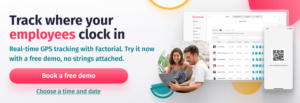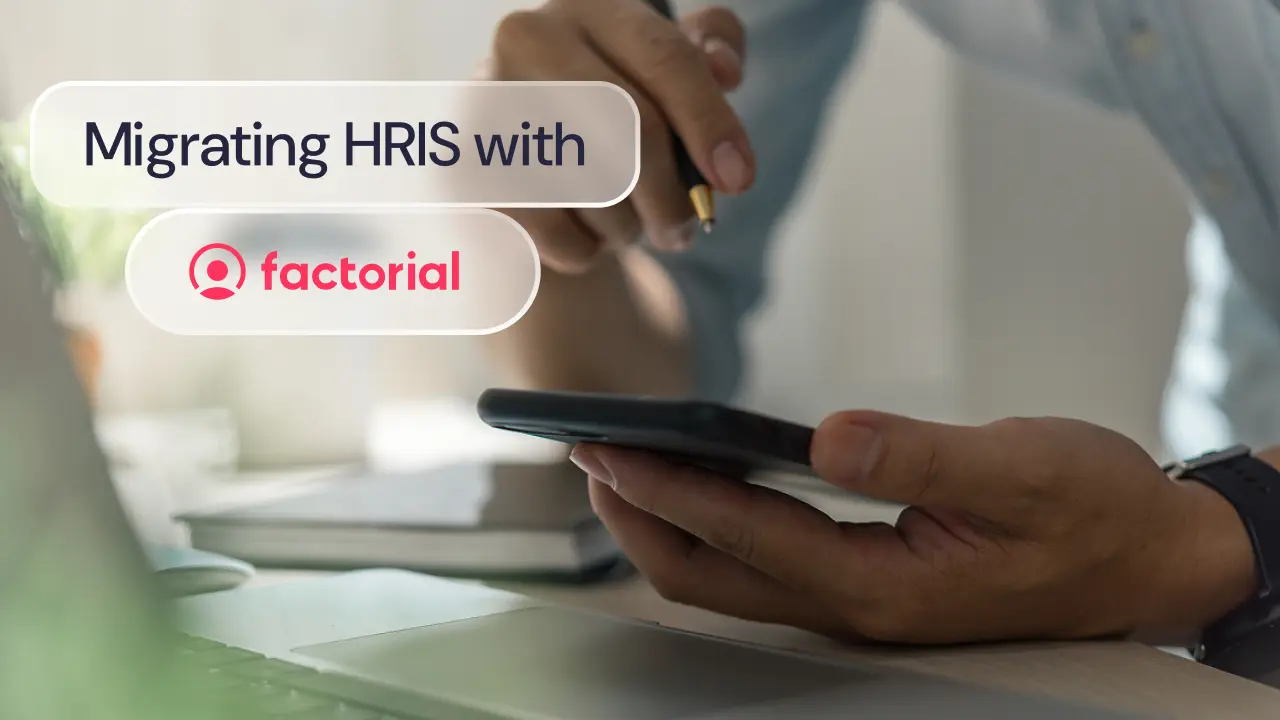Increasing numbers of employees are now working from home. In fact, according to McKinsey’s American Opportunity Survey, 58% of employees work from home at least one day a week, and 35% have the option to work from home five days a week. As a result of this shift, employers need to find solutions for remote employee time tracking to protect themselves from potential productivity drops and time theft. The best solution for this is time tracking software for remote employees.
But how do you know which remote worker time tracking solution is best for your business?
In today’s guide, we are going to discuss the benefits of using this software and which features you should be looking out for. We will also share a few tips and examples of popular remote employee time tracking tools to help you find the best platform for your organization.
✅ Check Out Our Time Tracking Software
Why use time tracking software for remote employees?
Remote employee time tracking is the process of monitoring and recording the hours worked by remote employees. This can be done through various methods, such as online time tracking software, virtual time clocks, or manual timesheets.
Remote worker time tracking is important because it helps you keep track of your remote workforce so that you can be sure that they are productive and working efficiently. Time tracking also enables you to accurately calculate employee hours for payroll and time and expense tracking purposes. Plus, you get valuable insights into employee performance and can identify areas for improvement in productivity and time management.
So, why is time tracking software for remote employees the best solution for all this?
Time tracking software for remote employees offers employers a more efficient, accurate, and transparent way to track employee hours worked, monitor productivity, and manage remote teams, compared to manual timesheets.
Specific benefits of using time tracking software include:
- Accuracy: Compared to using manual timesheets, you get access to much more accurate data. This helps you maintain accurate records and avoid over or underpayments.
- Convenience: With time tracking software, remote employees can easily log their hours from anywhere, at any time, using a computer or mobile device.
- Efficiency: You can integrate remote employee time tracking software with your payroll and performance management systems. This saves you time and reduces administrative work for your team.
- Transparency: You get real-time visibility into employee hours worked, which makes it easier to track productivity and identify potential performance issues.
- Compliance: The right software can help you stay compliant with labor laws and regulations, such as the FLSA.
- Cost savings: Using time tracking software can help reduce labor costs by accurately tracking hours worked, reducing time theft, and increasing productivity.
Remote employee time tracking tools
The right remote employee time tracking tools can help you find a good balance between giving your employees autonomy whilst maintaining control over performance and productivity.
But with so many different tools available, how do you know which solution is best?
Here are 4 examples of time tracking software for remote employees to get you started.
Factorial
Factorial’s cloud-based business management software solution that offers a range of tools in one platform. It includes features for recruitment, onboarding, attendance tracking, and performance management. Additionally, it offers a robust HR leave management system to track absences.
The platform also supports remote teams with powerful employee time-tracking tools. Below are some of the key features included in Factorial’s time-tracking software:
- Employees can easily clock in and out of work through a web browser, mobile app, or Slack integration.
- A user-friendly interface for managers to monitor attendance and overtime.
- Customizable timesheets that you can adapt to the specific needs of your business.
- Automatic reminders for employees who forget to clock in or out, reducing errors and saving time.
- Automatic tracking features that monitor employee activity and provide insights on how time is being spent.
- Managers can monitor employee overtime and approve or reject requests for overtime.
- Employees can track their hours worked by project or task, helping them stay on track.
- Integration with payroll software so you can automatically calculate pay based on hours worked.
- Customizable work schedules.
- Real-time reporting and analytics, allowing managers to easily monitor employee attendance and track time-related expenses.
- Software integrates with a variety of popular tools, such as Google Calendar and Slack, to streamline time tracking and reporting.
- Mobile app allows employees to track their hours on the go and provides access to real-time reporting features.
- Strong security features, including data encryption and two-factor authentication, to protect sensitive employee data.
- Flexible and fully customizable.
- Accessible from any device.
Overall, Factorial’s time-tracking software offers a range of features that can help employers track remote employee time accurately and efficiently, while also providing insights into how time is being spent. That way, you can monitor and improve the productivity of your employees and build a strong and motivated remote workforce.
Toggl
Toggl is a popular remote employee time tracking tool that allows individuals and teams to track the time they spend on specific tasks and projects. Users can easily log their hours worked, set project budgets and hourly rates, and generate detailed reports to see how time is being spent.
The software is available as a web application, desktop app, and mobile app, making it easy for remote employees to track their time from anywhere. Toggl also integrates with a variety of popular tools such as Asana, Trello, and Google Calendar, making it easy to streamline time tracking and project management for remote teams.
Pros:
- Simple and intuitive user interface.
- Software is customizable, allowing businesses to set up their accounts to suit their unique needs and workflows.
Cons:
- Free plan only allows for one user and two projects, which may not be enough for some businesses.
- Paid plans can be expensive.
- Limited reporting capabilities, which is a disadvantage if you need access to detailed reports on employee time and productivity.
Hubstaff
Hubstaff is a remote time tracking software designed for remote teams and freelancers. The software provides features for tracking time spent on tasks and projects, monitoring employee productivity, and generating detailed reports. Remote employees can easily track their hours worked through the desktop, web, and mobile applications, and they can also add notes, attachments, and project details to their time entries.
Hubstaff also offers features such as activity monitoring, GPS tracking, and automatic payroll processing to ensure accurate time tracking and payment for remote teams.
Pros:
- Offers a range of features, including time tracking, project management, and invoicing.
- Integrates with a variety of popular tools.
Cons:
- Can be expensive, especially for larger teams.
- Reporting capabilities are not very robust.
Tips for remote employee time tracking
Effective remote worker time tracking is about so much more than just tracking hours. It’s all about implementing a system that enables your remote workforce to work effectively and efficiently, regardless of where they’re located.
Here are a few remote employee time-tracking tips and best practices to help you implement a system that supports your remote work policy.
Choose software that makes it easy
The easier it is for your employees to track their time, the more control you will have over productivity. The remote employee time tracking software you choose should be easy to use with a simple and intuitive interface. Your remote staff need to be able to access the employee clock-in system from anywhere and on any device. Moreover, the software should automate time tracking as much as possible, with features such as automatic clock-in reminders and real-time tracking. Extra bonus if it includes features for managing overtime, time and a half, software integration, and time and attendance signing.
Be transparent about data
When it comes to remote employee time tracking, transparency is key. Make sure your remote workforce understands how the platform works, why it’s important to track time, and how you will use their data. If they understand that the tool benefits productivity and performance and helps to ensure payroll accuracy, then they will be less resistant to change.
Remember, you don’t want them to feel that you don’t trust them to do their jobs. Time tracking is there to make their lives easier (and yours). Employees should be able to access all the data you collect and manage their own hours worked, too.
Set clear guidelines and expectations
Setting clear guidelines and expectations is crucial for effective remote employee time tracking.
Here are a few tips to help with this:
- Set clear work hours and expectations for when employees should be available for work.
- Determine which communication channels employees should use so that communication is efficient and effective.
- Establish clear expectations for employee productivity. This can help employees stay on track so that they complete their work on time.
- Define policies for requesting time off and how time off will be tracked.
Communicate regularly
Finally, make sure you communicate regularly with your remote employees to see how they are progressing with their tasks and projects. This will help you understand how they are using their time and if there is anything you can do to improve their performance.
Regular communication also allows you to address any issues that may arise in a timely manner. Plus, regular check-ins help you maintain employee motivation and engagement.
The best time tracking software for your remote team
With so many software solutions for remote workers on the market, it can be easy to feel overwhelmed. Ultimately, the best remote employee time tracking software for your organization will depend on the specific needs of your business. Make sure you review your options and choose a tool that can help you track employee hours accurately whilst also supporting your business objectives.
Generally speaking, these are the features that you should be looking out for:
- Ease of use: Software should be user-friendly and easy to navigate.
- Time tracking and reporting: It should offer real-time automated tracking. You should also be able to access detailed reports on how time is being spent.
- Project management time tracking: Look for software that allows you to track time by project, client, or task. This gives you enhanced visibility over progress on specific projects.
- Integration with other tools: The solution you pick should integrate with other HR tools, such as payroll and performance management software.
- Flexibility: Choose software that can be customized to fit your specific needs.
- Mobile access: Choose a solution that your employees can access from their mobile devices. That way, they can track time while on the go.
- Security: Finally, choose a solution with strong security features, such as data encryption and two-factor authentication, to protect sensitive employee data.
Above all, the key to effective remote employee time tracking is finding a balance between monitoring productivity and respecting employee autonomy and well-being. By following today’s tips and using the right time tracking software, you can create a remote working environment that fosters productivity, engagement, and job satisfaction for all your employees.


